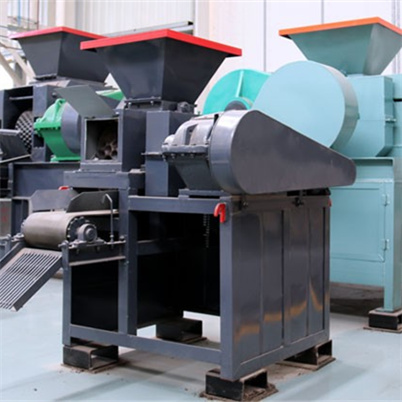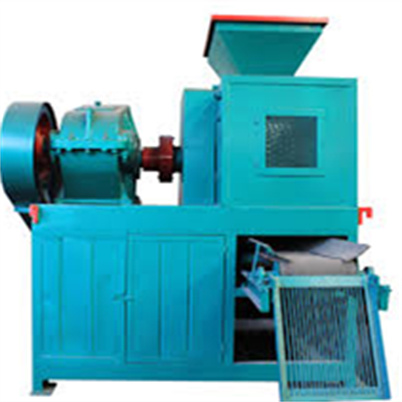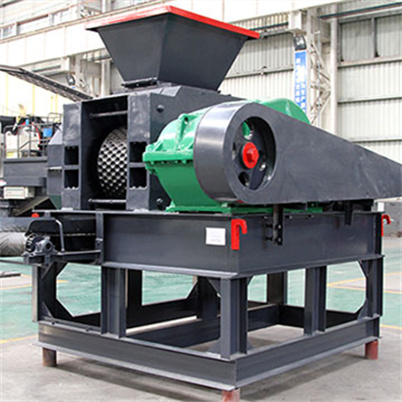





1. The feeding part
It is mainly to realize the quantitative feeding to ensure that the material even···
We're here to help:Easy ways to get the answers you need
Introduction
1. The feeding part
It is mainly to realize the quantitative feeding to ensure that the material evenly enters between the rolls. The screw feeding device is driven by the electromagnetic speed regulating motor, and is rotated by the pulley and the worm reducer to force the pressed material into the main feeding port.Due to the constant moment characteristic of the electromagnetic speed regulating motor, when the amount of material of the screw feeder is equal to the amount of material required by the main engine, a constant supply pressure can be maintained to gain the high quality of the pellet.If the feeding is too large, the feeding device is overloaded; if the feeding is too small, the briquette can not be formed. Therefore, the skilled operation technique is an important condition for ensuring the normal operation of the machine.
2. The transmission part
Its main drive system consists of motor, triangular belt, reducer, open style gear and roll. The main engine is driven by an electromagnetic speed regulating motor, which is transmitted to the driving shaft through a pulley and a cylindrical gear reducer, and then through a pin and pin coupling.The passive bearing housing is equipped with hydraulics at the rear. A hydraulic pump generates high-pressure oil into the cylinder to cause axial displacement of the piston, thus protecting the machine. The front joint of the piston rod is placed on the bearing housing to meet production pressure requirements.
3. The molding part
It mainly refers to the main engine part, and the core part is the roll. When the feed between the two pressure rollers is too much or enters the metals, the hydraulic cylinder piston rod is overload.Next, the hydraulic pump will stop working, the accumulator will buffer the pressure change, the overflow valve will open for oil return, and the piston rod will be displaced to widen the gap between the pressure roller to allow the hard object to pass through the roller.
Finally, the system pressure returns to normal, thereby protecting the pressure roller from damage.

Working Principle
Feed the raw material to the hopper on top of the roller press, then it falls into lower roller pressing area through gravity or a screw feeding system. The drive system transmits the power to two pressure rollers with ball-pockets on the surface through a reducer and makes them rotate in converse directions but with the same speed. The material is hauled into the roller gap. As the bite angle decreases, the pressure increases and the material is compressed. When the two ball-pockets coincide, the briquetting pressure reaches a maximum and briquettes are made. With the continuous rotation of the pair of rollers, the briquettes fall out of the machine under the action of the demolding force and its own gravity.

Specification
Model | Roll diameter | Roll width | Total pressure | Main motor power | Output | Weight |
GY520-150 | 520 | 196 | 150 | 55 | 2.2-3.5 | 13 |
GY650-220 | 650 | 200 | 220 | 110 | 4-6.5 | 19.2 |
GY750-300 | 750 | 280 | 300 | 185 | 6-8.5 | 34 |
GY1000-350 | 1000 | 440 | 350 | 250 | 10-15 | 50.8 |
GY1000-450 | 1000 | 504 | 450 | 280 | 14-17 | 58.5 |
GY1000-500 | 1000 | 504 | 500 | 315 | 15-20 | 58.5 |
GYS1000-500 | 1000 | 600 | 500 | 280 | 17-21 | 56.5 |
GY1000-540 | 1000 | 900 | 540 | 185Kw×2 | 30-35 | 60 |
GY1200-800 | 1200 | 900 | 800 | 280Kw×2 | 40 | 110 |
GY1400-1000 | 1400 | 1000 | 1000 | 400Kw×2 | 50 | 156 |
Customer case

InquiryPlease Feel free to give your inquiry in the form below. We will reply you in 24 hours.